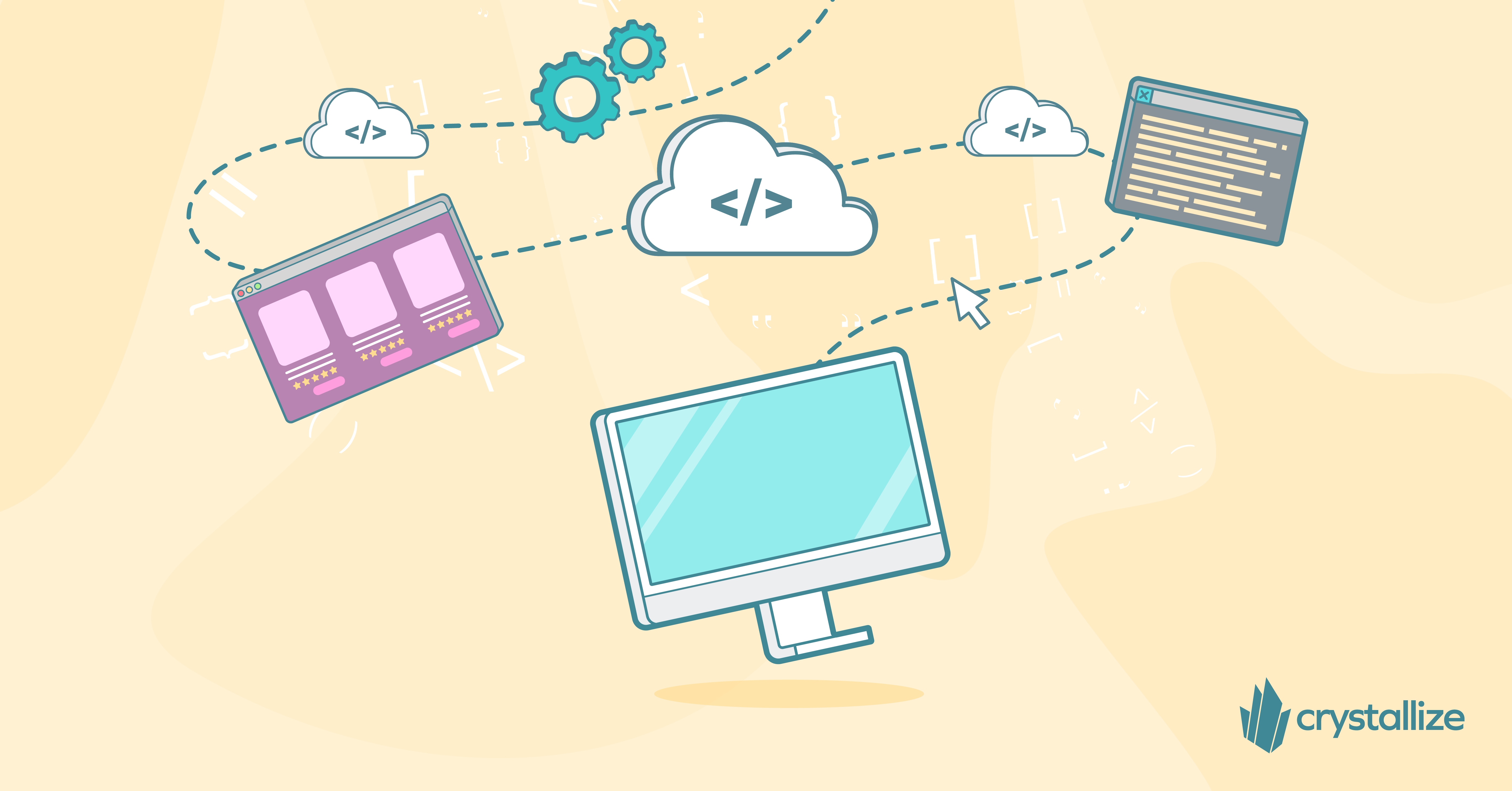Harnessing the Power of Serverless eCommerce
Serverless computing is not a new concept; it is a paradigm that has redefined how eCommerce platforms are hosted and managed.
The traditional eCommerce setup often entails substantial upfront investments in server infrastructure, complex management, and maintenance routines. Additionally, the rigidity of such setups can impede the scalability essential for handling traffic surges during sales events, thus affecting performance and user experience.
Serverless eCommerce emerges as a solution to these challenges, offering a new approach that significantly reduces operational overhead, enhances scalability, and optimizes cost-efficiency.
The State of Serverless 2023 report by Datadog underscores a rising trend in major cloud providers adopting serverless technologies. The global serverless architecture market, valued at over USD 9 billion in 2022, is projected to burgeon at a CAGR of over 25% from 2023 to 2032. Similarly, the global serverless computing market is estimated to grow at a CAGR of 20.8% from 2022 to 2028.
The statistics we mentioned above testify to the significant strides the serverless approach is making. It's (kind of) evident that if you haven't done so already, now is the time to delve deeper and enumerate serverless benefits, check real-world use cases, discuss technical considerations, and understand best practices for businesses eyeing a transition to this modern eCommerce paradigm.
But before all that we've got some term explaining first.
The term serverless might evoke a notion of a system operating without servers, which is a misnomer. Serverless refers to an architecture model where developers can build and run applications and services without managing server infrastructure.
The cloud service provider (such as AWS, Google Cloud, Azure, Vercel, Cloudflare, etc.) automatically manages the provisioning of servers and, in most cases, just executes your server-side code, letting developers focus more on building the applications.
Serverless eCommerce is an evolution in eCommerce development that leverages serverless computing. Unlike traditional setups requiring dedicated servers and hefty management, serverless eCommerce abstracts away much of the server management and operational responsibilities. This abstraction allows for automatic scaling, reduced operational overhead, and a pay-as-you-go pricing model.
A classic serverless eCommerce architecture setup can hold the following components (and more):
- The User Interface (UI) is where customers interact with the eCommerce platform. It typically includes a web application but could also have mobile applications. A UI most likely does not need a server, and a browser can execute the code as it is served by the Content Delivery Network (CDN). There is no computation to be executed here. This may include HTML, CSS, and JavaScript.
- Content Delivery Network (CDN) will also deliver users the static content of the eCommerce platform, such as images, videos, fonts, sounds, etc.
- An Optional API Gateway handles routing requests from the UI to the appropriate serverless functions or services. It acts as a front door to manage and analyze REST, HTTP, and WebSocket traffic to back-end services.
- Serverless Functions (e.g., AWS Lambda, Azure Functions) execute code in response to events triggered by the UI or other services. They handle business logic, read from or write to databases, and interact with other services. They are the ones computing; they execute the code and die.
- A database, often a managed service, stores data related to the eCommerce platform, including product catalogs, customer data, and order history. Many serverless databases exist (Aurora, DynamoDB, MongoDB Atlas, PlanetScale, Neon, etc.), and they are bringing serverless abstraction to the data: the computation unit to mutate or query data in the DB is serverless as well.
- Event sources trigger serverless functions. These can include changes to data in a database, new files in a storage bucket, or custom events. Your browser hitting the home page is also a trigger!
- Identity and Access Management (IAM) controls who can access various resources and services within the architecture, including both human users and automated processes. There is most likely a JWT Token here, but not only.
- Third-party services and APIs include payment processing systems, shipping services, and other external services with which the eCommerce platform interacts.
- Monitoring and logging services collect metrics, logs, and trace data to ensure the system operates correctly and provides insights into its performance and usage.
Finally, storage services hold static and dynamic files, images, and other necessary assets for the eCommerce platform.

The migration towards an eCommerce platform that relies on serverless architecture is driven by myriad benefits that address the conventional challenges of managing online retail platforms. Here are some of the key advantages.
Serverless architectures are designed to scale resources automatically based on incoming traffic and workload. This auto-scaling feature ensures the system can handle traffic surges during peak times, such as sales events, without requiring manual intervention to provision or de-provision resources. This is particularly beneficial for eCommerce platforms where traffic can be highly variable.
Serverless eCommerce operates on a pay-as-you-go pricing model, where businesses are billed based on the actual usage of resources rather than having to pay for pre-allocated server capacities. This model significantly reduces operational costs, making it a cost-effective solution for small to medium-sized enterprises. It’s very similar to automatically bootstrapping a machine but way more efficient and cheap. For instance, Cloudflare worker charges on CPU time; if the CPU is idle waiting for another resource, you don’t pay!
With server management abstracted away, businesses can focus more on core functionalities and innovate on the customer experience. The reduced operational burden accelerates the development cycle, enabling faster deployment of new features and improvements. No more never-ending Terraform configuration, or at least a much simpler one!
Serverless eCommerce platforms can process events in real time, enabling dynamic and interactive user experiences. This real-time processing capability is essential for features like inventory updates, price adjustments, and personalized recommendations, which are crucial for maintaining an up-to-date and engaging eCommerce platform.
The on-demand allocation of resources in serverless architectures ensures that the system operates at optimal performance levels. Resources are made available precisely when needed, minimizing latency and enhancing the user experience, which is critical in the competitive eCommerce space. Moreover, code execution can happen on the Edge. The code is executed close to your users, and the latency is reduced drastically, which is crucial in eCommerce.
Comic source: Old School vs. Serverless Deployment👇

From handling high-traffic scenarios and facilitating real-time interactions to fostering cost-efficiency and environmental sustainability, serverless eCommerce emerges as a robust solution for modern online store challenges.
For example, serverless architectures ensured seamless performance of the eCommerce marketplace even under the spike in traffic, like during Black Friday and Cyber Monday, delivering a consistent user experience and driving higher sales conversions.
A large-scale electronics retailer can utilize serverless eCommerce to achieve real-time inventory management. A fashion-centric online store, on the other hand, can employ serverless architectures to deliver personalized shopping experiences. The same goes for a furniture business such as Sweef, for example.
A gourmet food retailer streamlined its order processing system by transitioning to a serverless setup. Finally, an environmentally-conscious brand adopted serverless to reduce its digital carbon footprint.
These use cases exemplify the diverse advantages and solutions that serverless eCommerce architectures can bring to the table.
Utilizing cloud services is at the core of serverless eCommerce. Selecting a cloud provider that offers robust serverless computing services is imperative. The choice of cloud provider will significantly impact the serverless eCommerce setup's performance, scalability, and cost-efficiency.
Serverless functions are the building blocks of serverless eCommerce architecture. Understanding how to design, deploy, and manage serverless functions is crucial for implementing business logic, handling events, and interacting with other services and databases.
The choice of database technology and data management practices will significantly impact the performance and reliability of the serverless eCommerce platform. Choosing databases that align well with serverless architectures is vital and ensures data consistency, integrity, and availability.
Code execution on the Edge is nice if your data are close to those computation units. You’ll most likely make some choices between consistency and performance for some of the features within your project.
A team with the requisite skills and knowledge in serverless technologies, cloud services, and modern development practices is vital for successfully transitioning to a serverless eCommerce model. Investing in training and skill development can significantly enhance the implementation and management of serverless eCommerce platforms.
Serverless architectures often lead to vendor lock-in due to the dependency on specific cloud providers' services. Evaluating the implications of vendor lock-in and considering strategies for mitigating potential risks is crucial.
Serverless eCommerce is not merely a fleeting trend but a substantial stride towards more efficient, scalable, and cost-effective online retail solutions. It's an avenue worth exploring for eCommerce businesses aspiring for technological robustness. operational efficiency, and faster time to market.
Dig More About the Topic
Most Common Arguments Fielded Against Serverless - https://lucvandonkersgoed.com/2023/10/13/if-the-shoulders-of-giants-are-offered-youd-do-well-to-stand-on-them/
What a typical 100% Serverless Architecture looks like in AWS! - https://medium.com/serverless-transformation/what-a-typical-100-serverless-architecture-looks-like-in-aws-40f252cd0ecb
The Pros And Cons Of Going Serverless With Your eCommerce Platform - https://www.retailitinsights.com/doc/the-pros-and-cons-of-going-serverless-with-your-ecommerce-platform-0001
Does Serverless Have Servers? - https://blog.bytebytego.com/p/serverless-has-servers
Contemplating going down the serverless route? We can help!
START building for FREE with Crystallize or schedule a 1-on-1 demo so we can show you how to scale your business effortlessly with the Composable Commerce approach.
Follow the Rabbit🐰
Composable Commerce: What it Is, How Does it Work and Is it for You in 2024?
Composable Commerce represents a paradigm shift in eCommerce architecture, fundamentally redefining how businesses approach their online shopping experiences.
Gartner predicts that by 2023, organizations that have taken to the composable approach will outpace the competition by 80% in the speed of new feature implementation.
Monolith, headless, microservices, Jamstack, MACH, composable… just when you thought you’d caught up, a new tech term popped up on the market. Distinguishing what they mean for you and your business is as hard as understanding their subtle differences, so let’s unwrap them today.



